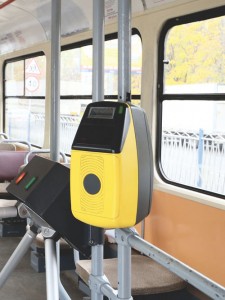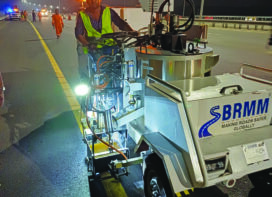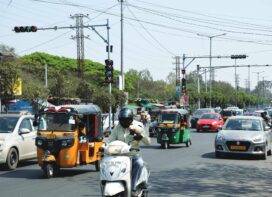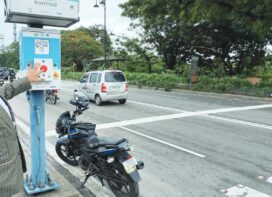Information Technology is playing an ever more crucial role in many sectors of modern society offering the most important solutions that we have today to efficiently help increase capacity, safety and security among other aspects. This is even more in public transport sector for which IT tools are potentially always available, widely applicable and actually already well integrated in many public transport systems around the world. Public transport’s modal share in cities should be increased without increasing just assets but also by increasing the utilisation of vehicles states Alain Flausch.
The Government of India has announced that it is planning to develop 100 smart cities across the country. The key idea of smart cities is the integration of public services with an integrated public transport system. IT, therefore, will play a crucial role in both integrating and automating these services.
Most Indian cities are facing the challenge of air pollution and traffic congestion. Transport is one of the key contributors to pollution in cities and only 33% of people are using public transport. Further, India comes top in both numbers of accidents and numbers of fatalities despite an average speed of just 15-17kmph.
India is still in the early stages of development compared to other countries. Benefits achieved by various countries in terms of time reduction, emergency response time and saving GDP are important for India too. There is a need for a National or State level architecture for integrated ITS to help promote this.
In the European Union, for example, vehicle manufacturers come together to build common specifications and with the same working parameters. This has helped to create healthy completion among these companies. India should form a forum at national level with all leading STUs along with external experts. They should create national architecture to create standards for the companies, which will force companies to follow the same.
 One of the key areas of improvement in public transport is asset utilisation. Increasing fleet size is not always a solution due to the cost involved. Therefore it is important for public transport companies to find solutions to use existing assets better. People should also be able to access information by just logging in at one systems. The key factors like Passenger Demand, Journey Demand, Service Hour and Service Frequency have great impact on the expenditure and revenue of any State Transport Undertaking. IT tools can alsohelp to refine processes and help to improve efficiency. The staff ratio in India is quite high compared to the global benchmark and it is important therefore to rationalise human resources.
One of the key areas of improvement in public transport is asset utilisation. Increasing fleet size is not always a solution due to the cost involved. Therefore it is important for public transport companies to find solutions to use existing assets better. People should also be able to access information by just logging in at one systems. The key factors like Passenger Demand, Journey Demand, Service Hour and Service Frequency have great impact on the expenditure and revenue of any State Transport Undertaking. IT tools can alsohelp to refine processes and help to improve efficiency. The staff ratio in India is quite high compared to the global benchmark and it is important therefore to rationalise human resources.
Public transport operators and authorities need to ensure the betterment of one of their key stakeholders: drivers. There is a need to increase the driver comfort to improve the operational experience. Buses should be equipped with in-board system which can create alarms on different parameters – driving behaviour in relation to defined threshold parameters. It is possible to improve fuel efficiency by 10% with better training on driver behaviours.
Manpower is the biggest cost component of bus operators. Any optimisation of manpower costs can bring good results for the operator. The saving from optimal scheduling and manpower can be reinvested in the system. BEST, Mumbai, for example, implemented a planning and scheduling system to save manpower costs by optimising resources. The corporation started with two depots as there was a risk of adverse impact from the staff union. This highlighted the need to implement projects in phased manner and the results were encouraging and helped the corporation save money.
Data is collected by various tools and can be used for better transport planning and to test field conditions. Tools can be used to build an accessibility index of the area served by public transport and this can help to identify the weak points.
 TrafficInfraTech Magazine Linking People Places & Progress
TrafficInfraTech Magazine Linking People Places & Progress


